When it comes to comets, the only thing that is certain is the orbital path. Though the cosmos has yet to send us a really bright comet for 2020 to keep us occupied during the ongoing worldwide pandemic and lock down, it has sent us a steady stream of descent binocular comets, including C/2017 T2 PanSTARRS, C/2019 Y1 ATLAS, and C/2019 Y4 ATLAS. And though Y4 ATLAS won’t match the “Comet of the Century” media hype, another interesting binocular comet has just made its presence known over the past weekend: C/2020 F8 SWAN.
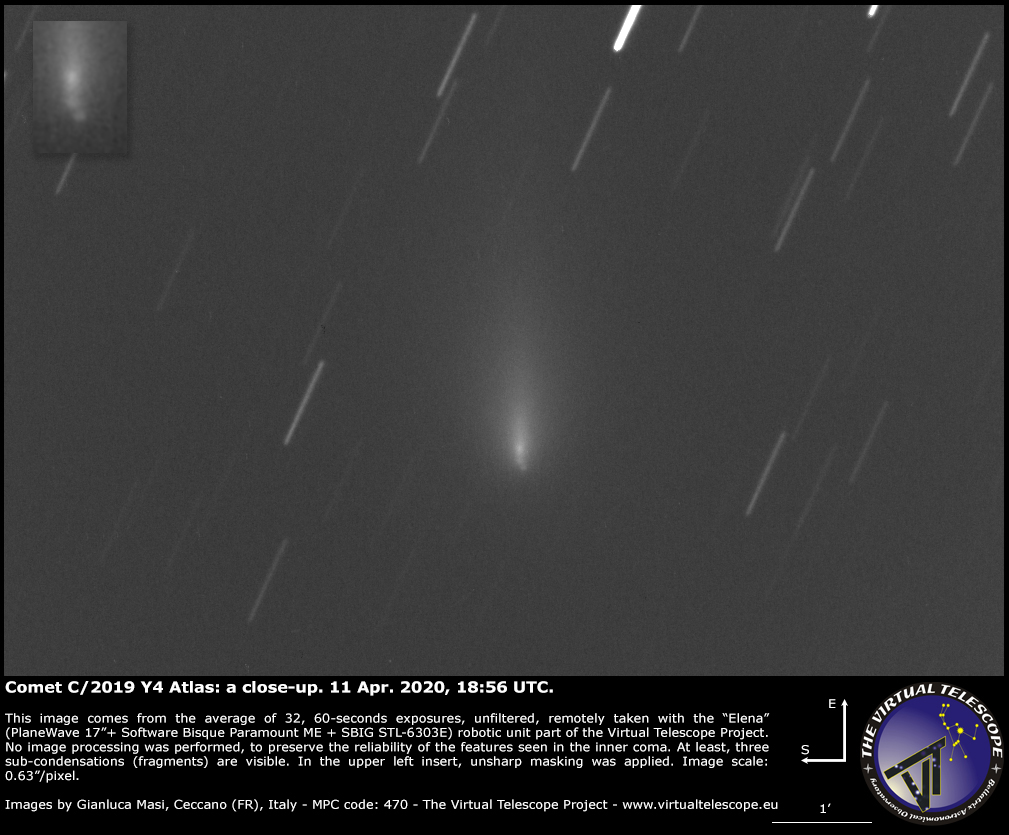
Comet Y4 ATLAS broke its over-performing trend early last week, disintegrating into several fragments as observers watched on. This is not uncommon, especially as a comet nears the Sun. We all remember the painful saga of C/2012 S1 ISON on U.S. Thanksgiving Day 2013. Astronomer Karl Battams at the U.S. Naval Research Laboratory called it back in mid-March, stating “I still worry that this comet is not entirely happy with the conditions it’s facing, and might fizzle out,” on Twitter.
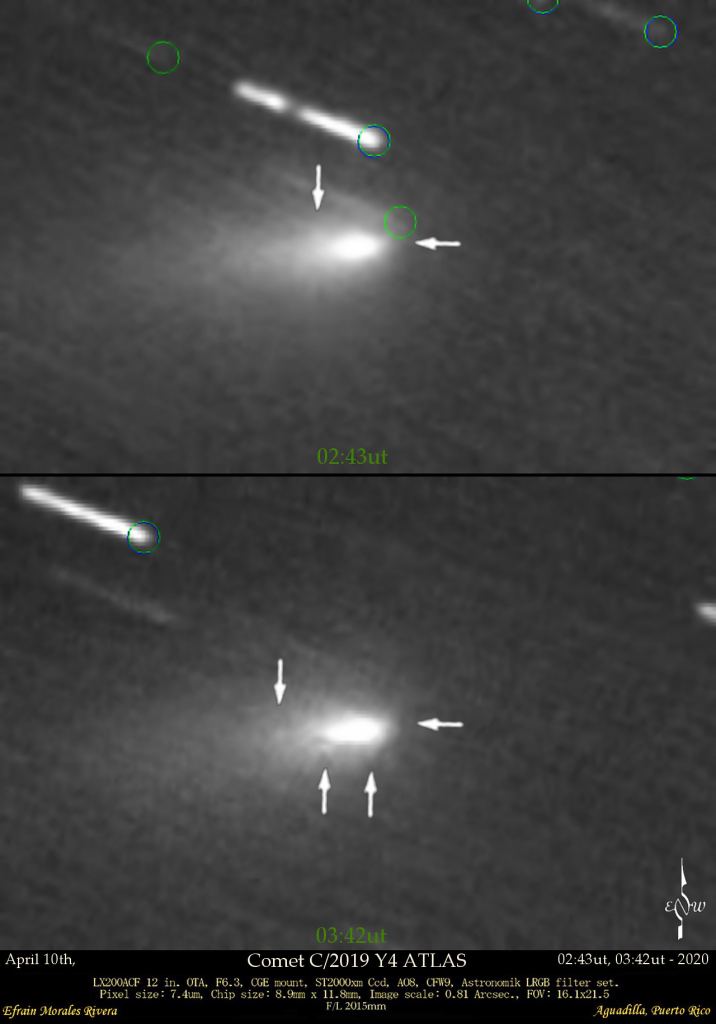
And as is also common with new comets, Y4 ATLAS became the center of a lot of unwarranted hype prior to breakup, with many news outlets exclaiming that it could become a “great daylight comet as bright as the Moon” (spoiler alert: it won’t). Some of this stemmed from the comet’s brightening ahead of predictions in March, and its orbital similarities and probable relation to the Comet of 1844.
Y4 ATLAS broke up 1.4 Astronomical Units (AU) from the Sun as it was crossing the constellation Camelopardalis. Already, its brightness has taken a hit, fading a full magnitude down to +8.5. It remains to be seen if we’ll have anything left to recover during this May’s dawn apparition of the comet, but prospects aren’t good.
Enter Comet SWAN
But the cosmos has another cometary card up its sleeve. Rumors abounded this past weekend of an already bright comet found approaching from sunward spotted by a solar observing spacecraft. This is not an unusual occurrence; for example, Comet C/1948 V1 was actually discovered by surprised ground observers during a total solar eclipse while it was near the Sun at an already bright magnitude -2.
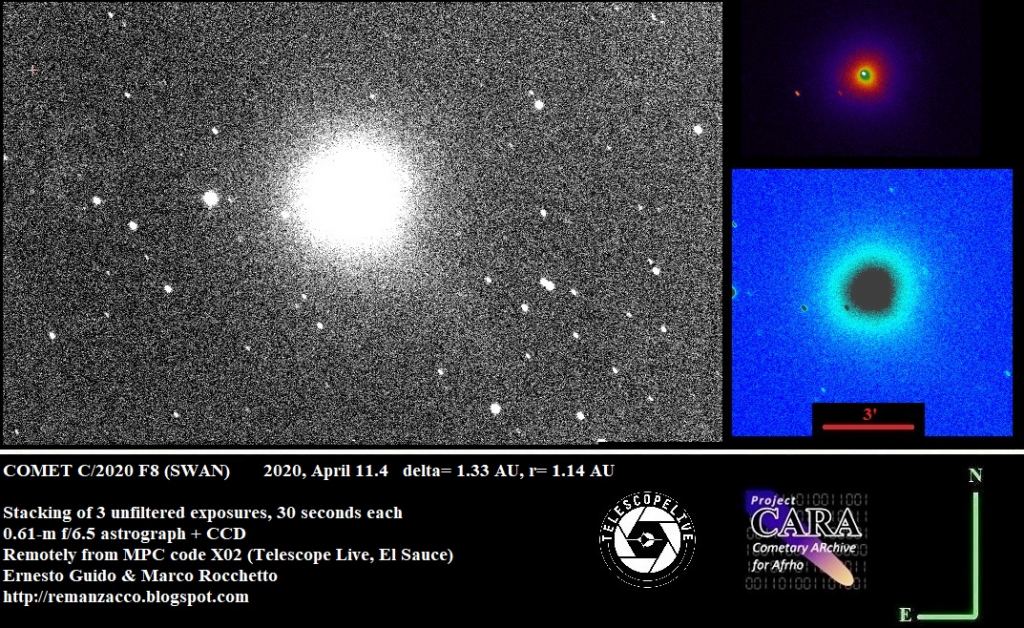
The Minor Planet Center at Harvard finally released circular 2020-G94 on Sunday night, announcing the discovery of Comet C/2020 F8 SWAN. The comet was discovered in March 25th images from the SWAN (the Solar Wind ANisotropies) camera aboard the Solar Heliospheric Observer (SOHO) spacecraft.
F8 SWAN was discovered while it was deep in the southern hemisphere skies at 1.77 AU distant. Currently shining at magnitude +8 in the constellation of Grus the Crane, the comet will pass closest to the Earth at 0.556 AU (51.7 million miles) distant on May 13th , moving about two degrees (four times the diameter of the Full Moon) a day. The comet then reaches perihelion shortly afterwards on May 27th.
It seems like we either caught first sight of the comet in outburst, and/or it’s an intrinsically large bright object, another plus.
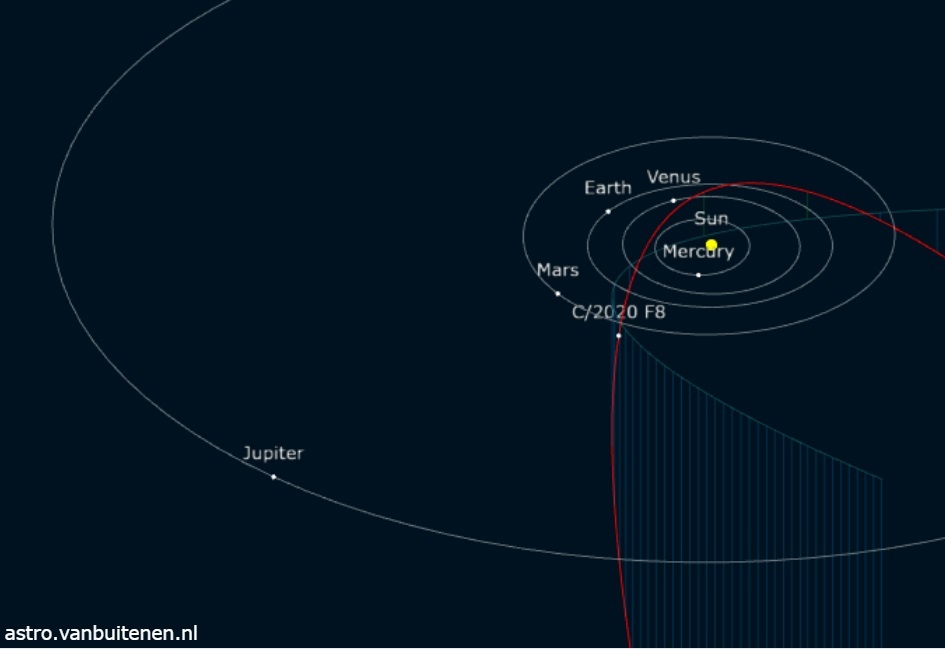
With a steep orbit inclined 111 degrees relative to the ecliptic plane, Comet F8 SWAN is on an orbit in access of 10,000 years. The comet could also be making its first visit to the inner solar system, meaning its dynamically new and prone to lots of outbursts as it nears the warmth of the inner solar system for the first time.
For northern hemisphere observers at mid-latitudes, the very best time to catch this comet is in mid-to late May, low to the northeast at dawn. Ironically, the comet will greet what remains of Comet Y4 ATLAS in the same region of sky on May 22nd.
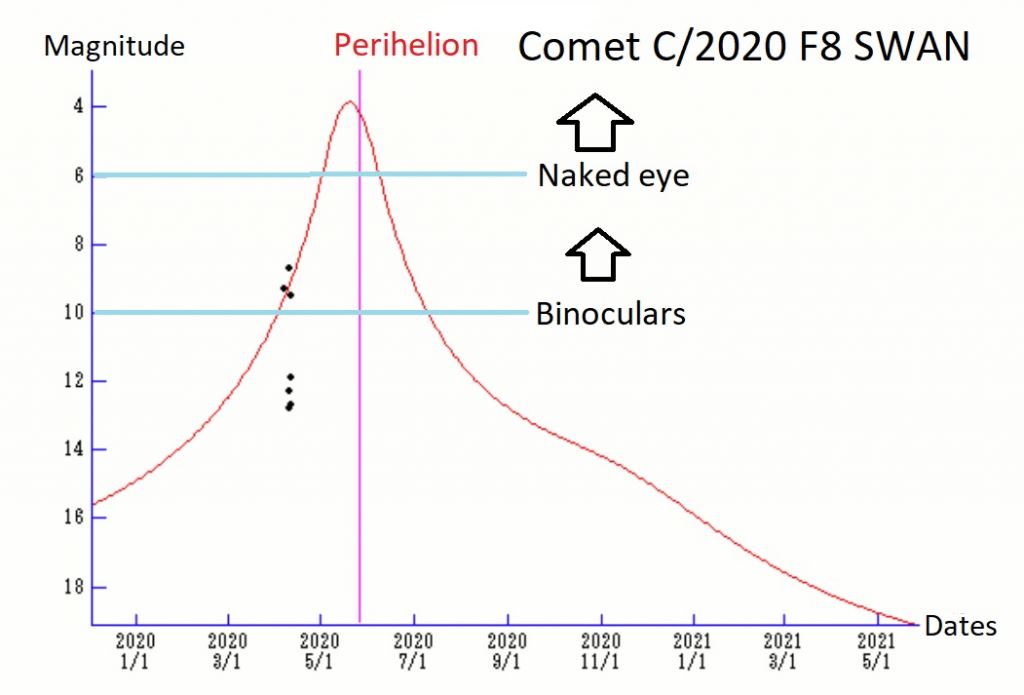
Here’s our look at dates with celestial destiny this Spring for Comet F8 SWAN:
April
(Unless otherwise noted: a close pass is one degree or less)
16-Crosses into the constellation Sculptor
18-Passes +4.4 magnitude Gamma Sculptoris
23-Passes 18 degrees from the southern galactic pole
26-crosses into the constellation Aquarius the Water-Bearer
30-Passes into the constellation Cetus
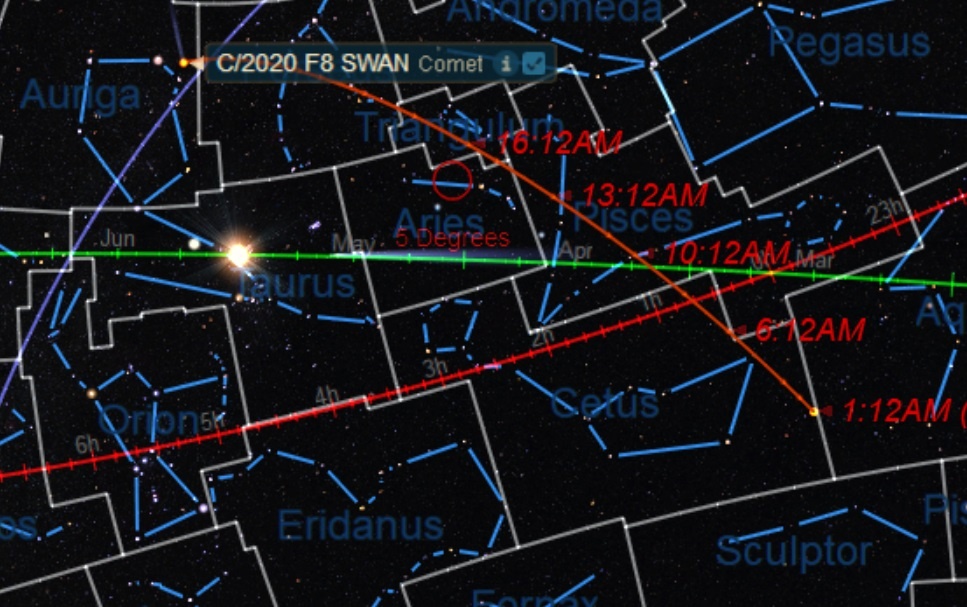
May
1-May break +6th magnitude
4-Passes +3.5 magnitude Iota Ceti
5-Nicks the corner of the constellation of Pisces the Fishes
6-Crosses back into the constellation of Cetus the Whale
7-Crosses the celestial equator northward
8-Crosses back into the constellation Pisces
9-Crosses the ecliptic northward
12-Photo-op: passes 2 degrees from +3.4 magnitude Eta Piscium and the galaxy Messier 74
13-Passes closest to Earth at 0.556 AU (51.7 million miles) distant
14-Nicks the corner of the constellation of Aries the Ram
15-Crosses into the constellation Triangulum
16-Photo op: passes 6 degrees from galaxy Messier 33
17-May top out at +4th magnitude
18-Crosses into the constellation Perseus
19-Passes +4.2 magnitude 16 Persei
20-Passes 14’ from +2 magnitude Algol
22-Passes 5 degrees from Comet Y4 ATLAS
26-Reaches its farthest point north (declination +46 degrees)
27-Reaches perihelion at 0.429 AU (39.9 million miles) from the Sun
29-Crosses the galactic plane northward
30-Crosses into Auriga
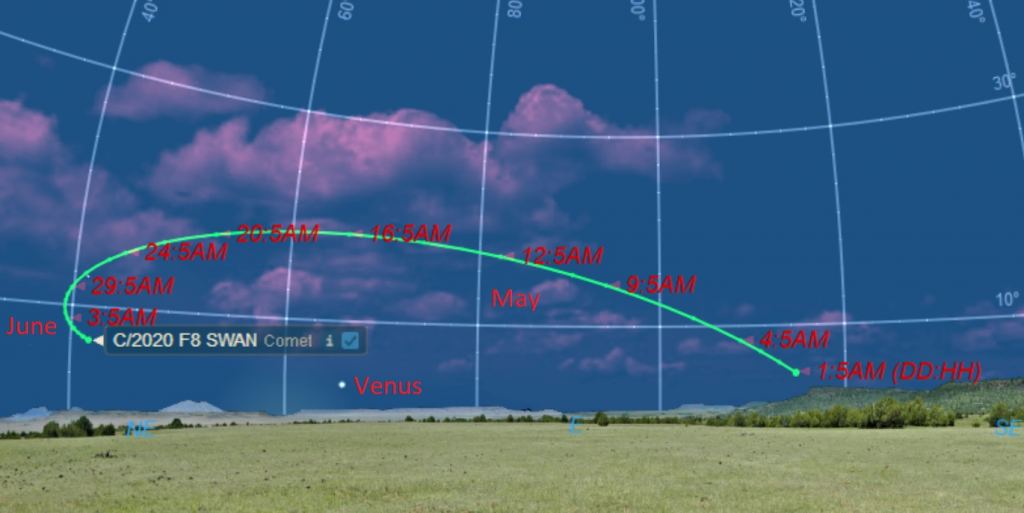
June
1-Passes near Capella
15-May drop back below +6th magnitude
16-Passes +2.6 magnitude Theta Auriga
29-Passes less than 10 degrees from the Sun
30-Drops below +10th magnitude
One can only imagine the spectacle of two bright comets at dawn. Remember waaaay back when in the late 90s, when comets Hyakutake and Hale-Bopp graced northern skies in rapid-fire succession? It can be argued that we’ve yet to have a very bright northern hemisphere comet since the advent of digital astrophotography. Gambler’s fallacy notwithstanding, we’re due.
If there’s an onus you can assign to the Universe, it seems to be mocking us, with no solar activity, no meteor showers and no eclipse to keep stay-at-home astronomers and skywatchers occupied. Perhaps, tracking down this current string of binocular comets will prove to be a worthy pursuit.
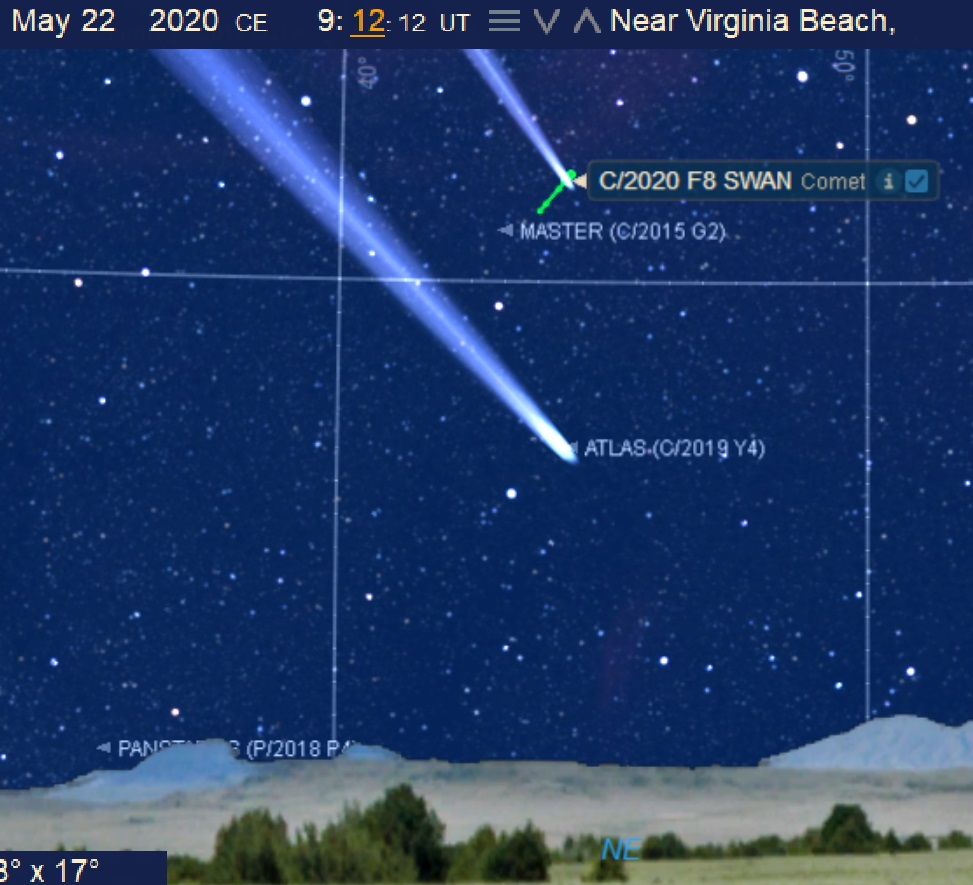
Lead image: Newly discovered Comet C/2020 F8 SWAN, imaged using the remote Q56 Telescope Live in Australia. Image credit: E. Guido, M. Rocchetto, and A. Valvasori.

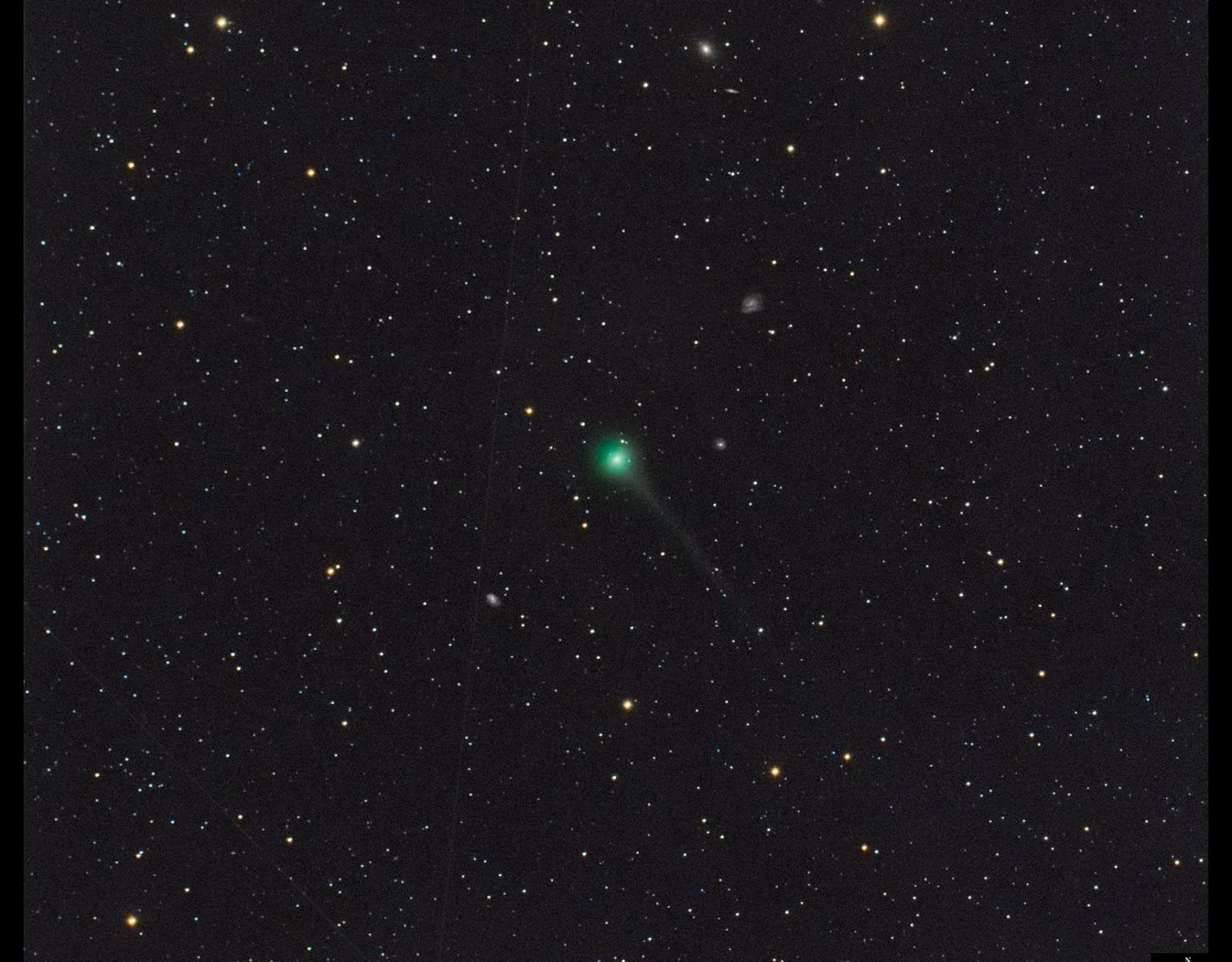
Thanks David,
very good information.